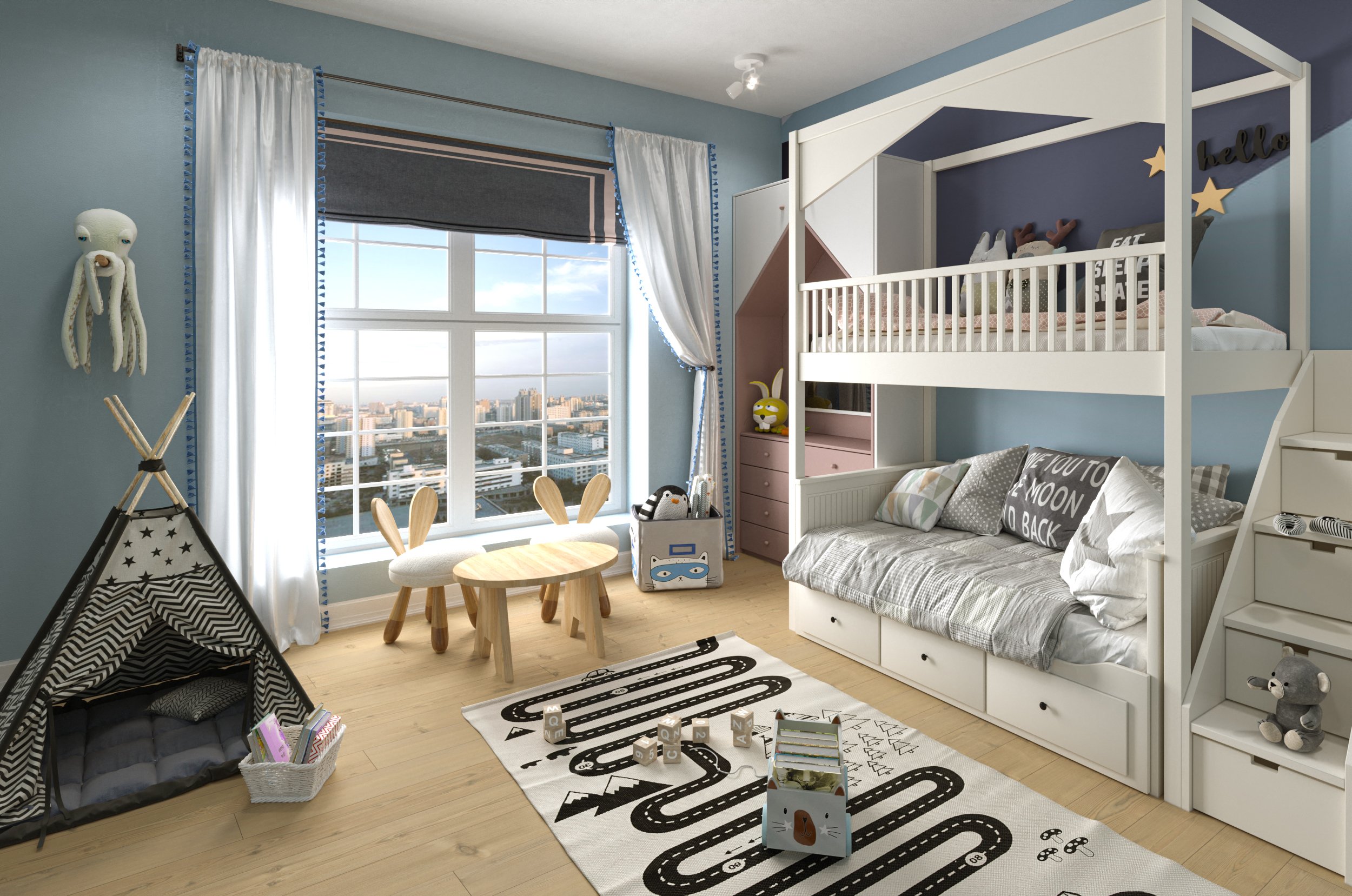When your kids are ready to have their own bedrooms, for sure, they are excited to have a well-designed bedroom made according to their likes. You will also be excited about how you could make your kid happy by decorating his or her bedroom. In fact, the kids’s room is very important for his growth because children’s intelligence and creativity are influenced mainly by the place where they spend a big part of their childhood. The child’s desires and preferences regarding the room must be skillfully placed in balance with the objective of creating a safe and welcoming environment. The child’s room must not only provide comfort but also a warm atmosphere and it must contribute to the harmonious development of the child on several fronts.
So, for now, here are tips in designing your kid’s bedroom that may help you to please your children.
1. Safety comes first
The furniture that carries risks for the child must be avoided such as the one made of glass or the one which has sharp corners. It is recommended to opt for furniture with rounded corners or protected by caps. The pieces of furniture should not be placed near the window in order to not allow the child to reach the window. It is advisable to use slow-closing hinges to prevent pinched fingers when using cabinet doors or drawers.
Any appliances are hazardous for a child. It’s equally dangerous to have uncovered wall sockets, appliances within a child’s easy reach, which could cause injuries. Big appliances, such as table lamps, which can be pulled off are also hazardous. If you must, mount outlets and appliances in a manner that it’s well-covered and safely out of reach of the child. Make sure all cords are secured, unplugged when not in use to minimize the risk of injuries.
Limit placing some kind of trees in the room. Again, while houseplants add freshness to the room, they can also quickly turn toxic to young children. Before bringing in any houseplant or setting, double-check if your child’s allergic to them, and place them at a distance, away from easy reach.
2. Color it up
Picking a peppy color scheme will go a long way in bringing that upbeat, youthful vibe to your kid’s bedroom.
For the wall of the bedroom, choose bright colored paint and combine it with some prints. Aside from the wall, you can also use it for cabinets and other accents. You can try using a mural instead of prints. Let it show your kid’s favorite theme like flowers, race cars and others.
Use colorful bedspreads, blinds, rugs and wall panels to brighten up your kid’s room and give it a distinctive flavor. Be sure to balance out bold colors with spots of soothing neutrals for a pleasing visual.
3. Choose the right light
The importance of lighting should never be underestimated when decorating a kid’s bedroom: fairy lights help to create a cozy ambiance, task lighting above or beside beds helps to encourage reading and lampshades on ceiling lights bring focus to a room.
You also should pay particular attention to the light sources. Warm white light is preferable, used after the sunset for general illumination of the room. The child can use a desk lamp for the activities developed at the desk. During the day, in the child’s room, a rich natural light is desired.
4. Use innovative storage
Storage areas are important for a kid’s bedroom to keep your kid’s things. Choose pieces of furniture equipped with sufficient storage spaces. Allocate different areas for their toys, books and clothes.
In order to encourage your child to clean up and become neat, in the room there must exist the necessary storage spaces that should be accessible and easy to use. When in the room there are no preset places for certain things, the child cannot assimilate the concept of order. He will learn that everything has its place and will get used to placing the toys, books, notebooks, clothes, etc in the correct drawers.
The necessity of some sufficient storage spaces is not equivalent to the agglomeration of the room. The furniture should be limited to the minimum necessary because less furniture can mean a more generous playground, which is very beneficial for the child.
5.Use child’s toys/ pictures as décor
Your child’s toys are colorful and they also come in different sizes and shapes. They can serve as a decoration for the room. This way, you can save storage space by using hooks to hang large toys and open shelves for small toys.
In addition, make use of pictures of your child’s fondest moment. You can include photos taken while your family were on vacation, activities in school, achievement day and many others. You can create an accent wall using these photos which are framed in various sizes.
6. Get your child involved
The child should be consulted and involved in the process of choosing colors, furniture, organization and general decoration of the room. This allows your child(ren) to express his personality and creativity and at the same time, he (she) receives a load of responsibility for his future room. This “responsibility” will encourage the child(ren) to be considerate with his space and to keep it neat and tidy.
Hopefully, our suggestions will help you in designing a kid-friendly space. If you’re wondering if your idea is right for your child’s room, we recommend using a virtual 3D rendering to review the resulting experience. Contact Home3ds to get more information about this service now!

